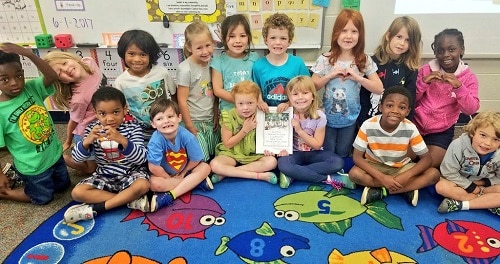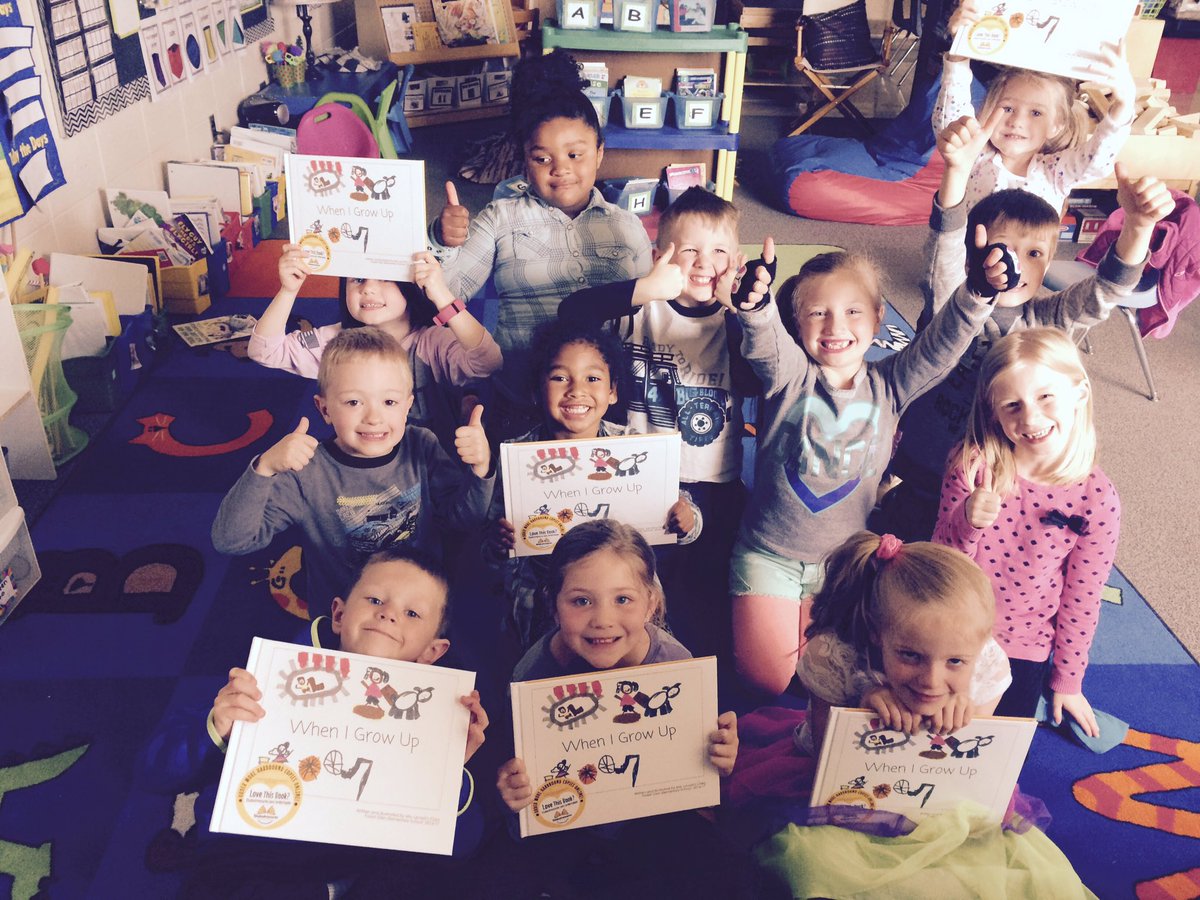 One of the my favorite things about teaching a kindergarten class has always been helping students learn to read and write. There’s something truly special about opening that door for them and watching the letters on the page slowly come to life. It’s like teaching magic spells to a bunch of young apprentices—at first, the words may seem like meaningless squiggles on a page, but before long, they’re creating whole worlds with them!
One of the my favorite things about teaching a kindergarten class has always been helping students learn to read and write. There’s something truly special about opening that door for them and watching the letters on the page slowly come to life. It’s like teaching magic spells to a bunch of young apprentices—at first, the words may seem like meaningless squiggles on a page, but before long, they’re creating whole worlds with them!
I’ll never forget the first time I worked on a classbook project with my kindergarteners. Being able to put pen to paper to express their thoughts already seemed like real magic to them; just imagine how excited they were when they found out their words and drawings had been published in a real book just like the bedtime stories their parents read to them!
Of course, since it was our first time, there were a few things I would have done differently—but in the years since, I’ve learned quite a bit from my students about best practices for publishing their writing. Here are just a few tips I picked up along the way!
 Publishing Tip #1: Keep it Simple
Publishing Tip #1: Keep it Simple
Your kindergarteners are fledgling authors just beginning to stretch and spread their wings. Learning to read and write are both huge milestones for them, and reaching those milestones will require hard work and patience from both them and you. A kindergarten-level classbook project shouldn’t add to the challenge, but rather be more of a reward for their perseverance and a means of measuring just how far they’ve come over the course of the school year.
Keep the publishing process simple by providing your students with straightforward step-by-step instructions and lots of guidance. The easiest way to do this is by using a free, preassembled publishing kit that comes with a set of guidelines and basic page templates that will help make your job easier and their responsibilities crystal-clear.
 Publishing Tip #2: Have Fun!
Publishing Tip #2: Have Fun!
The most effective way to engage your kindergarten students in a larger project like publishing a classbook is to make sure it feels less like work and more like play. Brainstorm book ideas together as a class and encourage them to share their wildest, most unique ideas. Consider checking out some free creative writing resources to spark both their imaginations and your own. Publishing, after all, is about celebrating student writing—and what’s a celebration without a healthy helping of fun?
Let your students to experiment and explore new ideas, and allow yourself to do the same. As Mrs. Frizzle of Magic School Bus fame always says, “Take chances! Make mistakes! Get messy!”
 Publishing Tip #3: Polish Before Printing
Publishing Tip #3: Polish Before Printing
As a kindergarten teacher, you’re also a gatekeeper of sorts. Your classroom is your students’ introduction to the wonderful world of academic knowledge. It’s up to you to give them a solid educational foundation on which to build. One of the most important lessons you can teach them is to always strive to do their best.
In terms of a classbook project, this means introducing them to the concepts like rough drafts and providing them with elementary editing strategies and revising worksheets. It also means doing your best to ensure they get the most out of both the creative process and their final product. Be sure to follow writing and publishing best practices like using markers for illustrations and tracing over pencil with black ink to ensure good print quality and a classbook that they’ll be proud of for years to come.

Ms. Anderson’s #proudauthors worked hard to get their classbook ready to publish.
Playing with Words
From practicing the alphabet to learning how to write full sentences about their favorite things to eat or the friendly monsters hiding in their closets and under their beds, kindergarten marks the beginning of a long and beautiful academic journey. Publishing your students’ writing is a great way to start that journey off on the right foot—and, with these tips in mind, you’ll be all set to help them get the most out of their first (but not their last!) publishing project.
For more creative resources to use in your classroom, be sure to check out our online teacher’s lounge, and sign up for your free publishing kit!
Image sources: Lead image and Image 3 via Twitter





